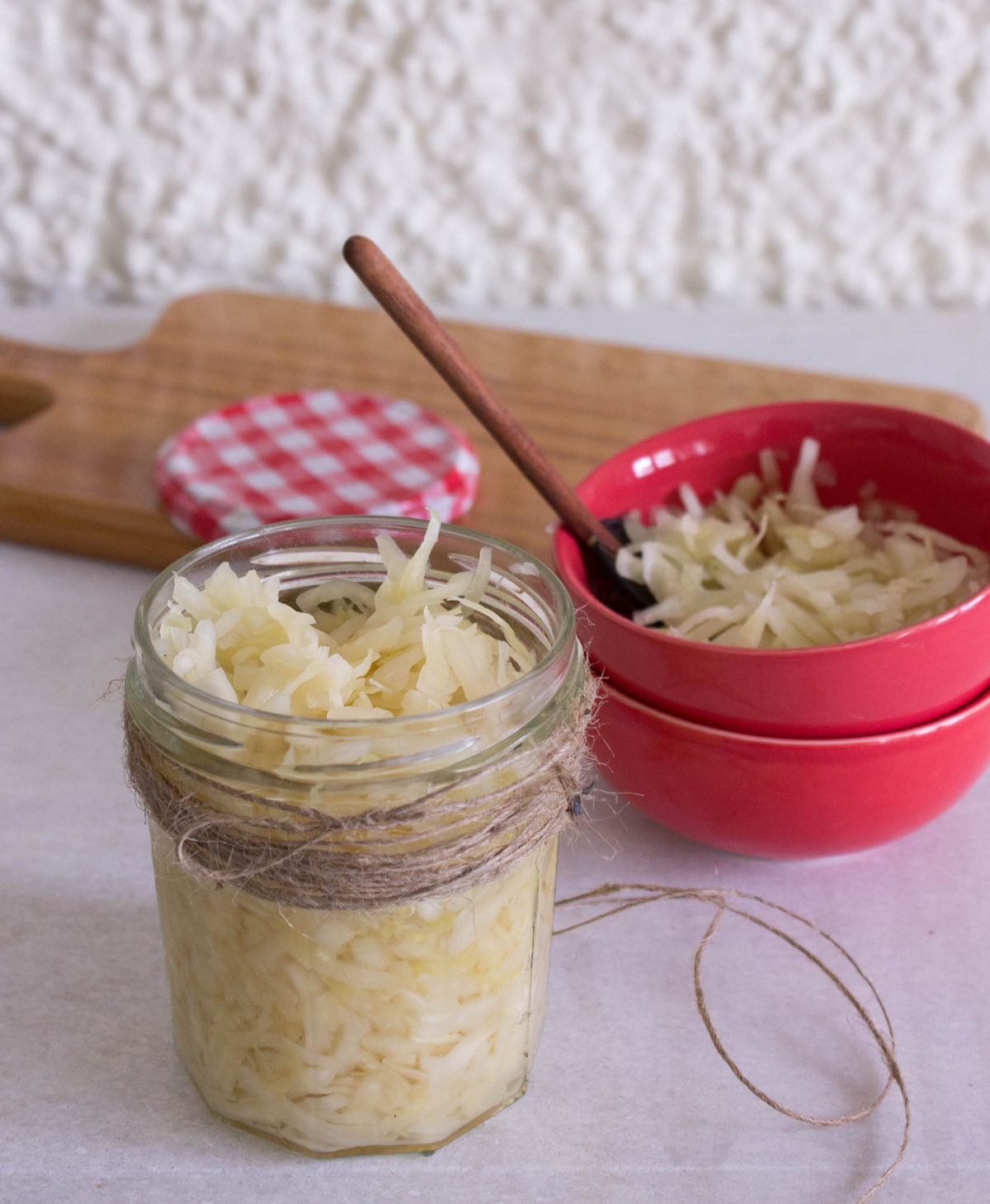HOMEMADE SAUERKRAUT

Serves: Makes about 500 - 750 grams
Ingredients
- 1 medium head green cabbage (about 1.25 kg)
- 1 ½ tbsp coarse salt
- EQUIPMENT:
- 2 wide-mouth 500 ml glass jars (or one 1-litre jar)
- Cloth for covering the jar(s)
- Twine or rubber band for securing the cloth
Method
- Clean the jars thoroughly with hot water and set aside.
- Remove the wilted outer leaves of the cabbage (don’t discard; set aside for now). Quarter, and remove the hard white core of the cabbage before slicing into thin long slivers. Transfer to a large bowl.
- Add salt to the cabbage and start working the salt into it by squeezing and massaging with your hands. Continue doing this for 5 minutes, by which time the cabbage will start to get slightly limp and wet.
- Grab handfuls of the cabbage and any of the water that may have collected at the bottom, and pack them into the sterilized jars. Once half full, make sure to tamp it down with the back of a spatula (essentially you want to pack the cabbage in without too many air pockets).
- Once the jars are filled with the cabbage, arrange the outer leaves on the surface and press down again. Cover the mouth of the jar with the cloth and fasten with the rubber band or twine.
- Leave the jar in a cool, dry area away from direct sunlight. On the first day, make sure to tamp down the cabbage with the back of a spatula every few hours. It will start to leach out more water as it sits, so you will need to do this only on the first day.
- If after 24 hours the liquid hasn’t risen to the top to submerge the cabbage, add ½ tsp of salt to ½ cup water and pour over the top.
- It might need anywhere between 3-8 days to ferment. Check it daily and make sure the cabbage stays submerged in the liquid. The longer it sits, the more funky it will get, so make sure to check regularly after the third day. I like mine after 5 days.
- Once ripe enough for you, remove the outer cabbage leaves, screw on a lid, and refrigerate. Stays good in the refrigerator for up to 2 months.
Notes
- You will notice little air bubbles start to form on the surface of the jars. This is completely normal.
- If you are looking to make a larger batch, it might take longer to ferment. The process is the same however, so just make sure to taste it daily.
- Use your judgement: I haven’t had any problems with making sauerkraut this way, but if for whatever reason yours does not look right or smells putrid, throw it away.
*Adapted from TheKitchn
- If you are looking to make a larger batch, it might take longer to ferment. The process is the same however, so just make sure to taste it daily.
- Use your judgement: I haven’t had any problems with making sauerkraut this way, but if for whatever reason yours does not look right or smells putrid, throw it away.
*Adapted from TheKitchn
Recipe by The Blurry Lime at https://www.theblurrylime.com/condiments/homemade-sauerkraut/